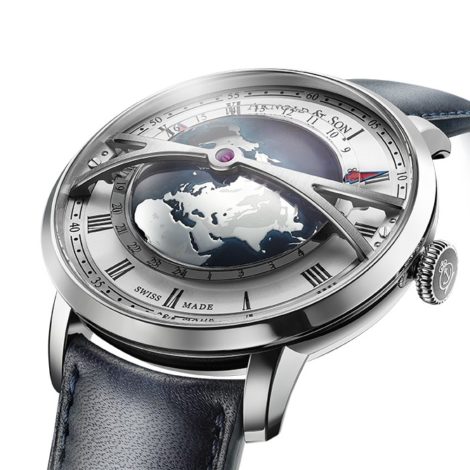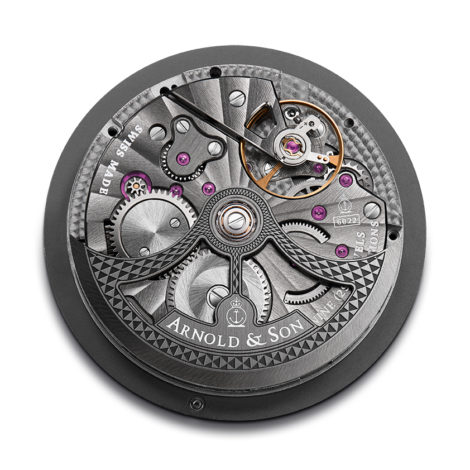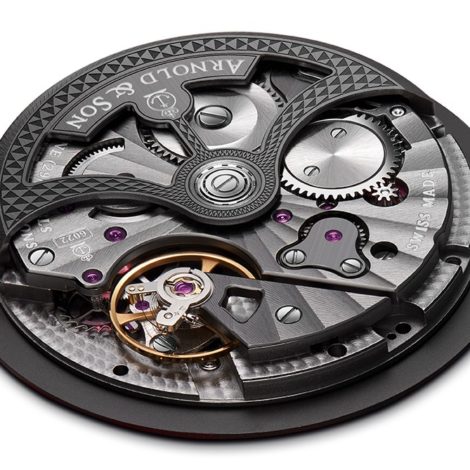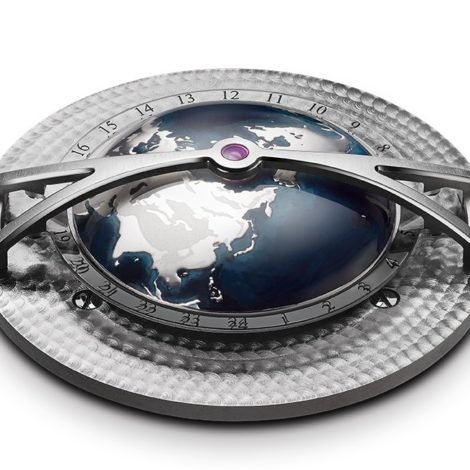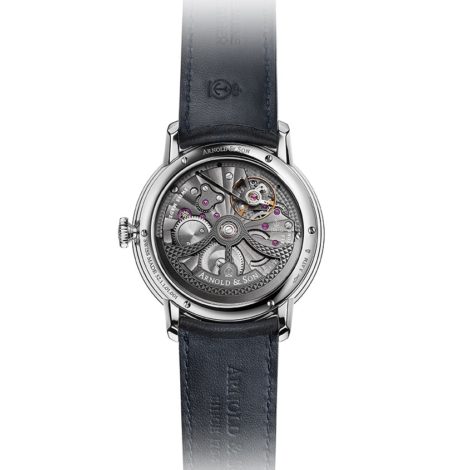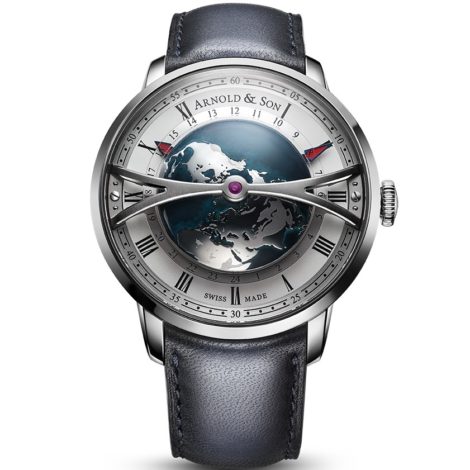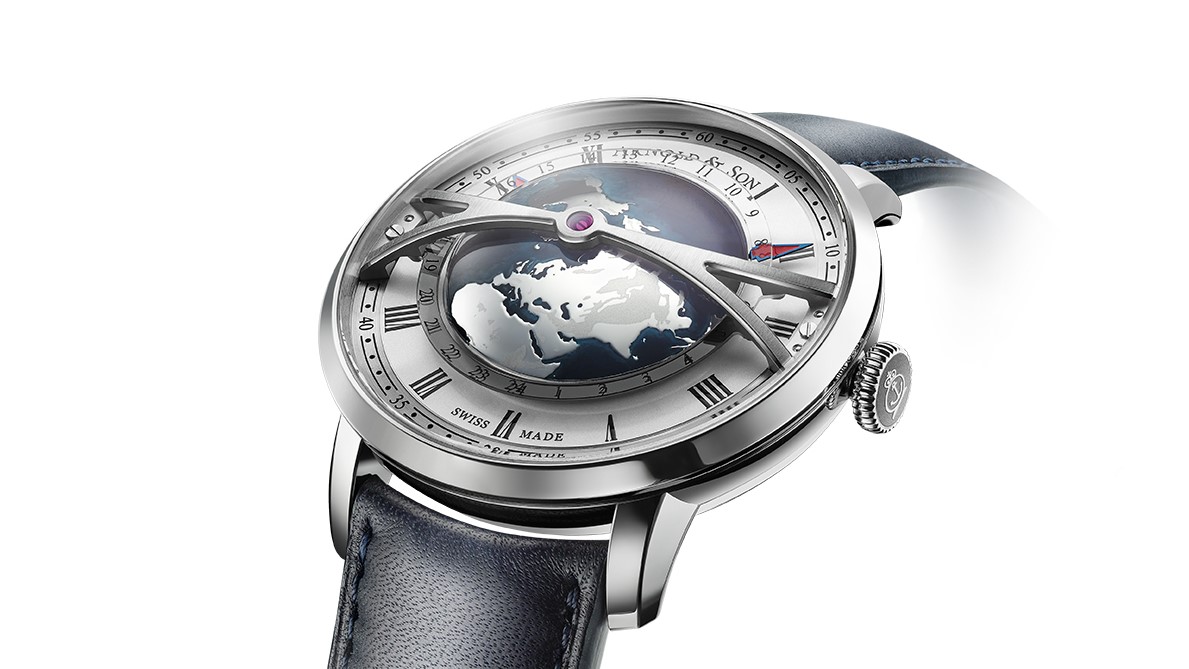
Let’s get one thing straight; the Arnold & Son Globetrotter is not, strictly speaking, a world-timer watch. In fact, I’m not even entirely sure it can be called a GMT watch. The La Chaux-de-Fonds-based manufacture waxes lyrical in their press release about the large 3-dimensional hemisphere dominating the dial, claiming it to be “one of the world’s largest rotating 3D world-time displays on a wristwatch,” with some justification; it is a beautiful element of wrist-sculpture. However, there’s no apparent way to use this watch to tell the time in numerous time zones simultaneously, nor is it straightforward to tell the time in even one additional timezone, as you’d expect from a GMT watch.
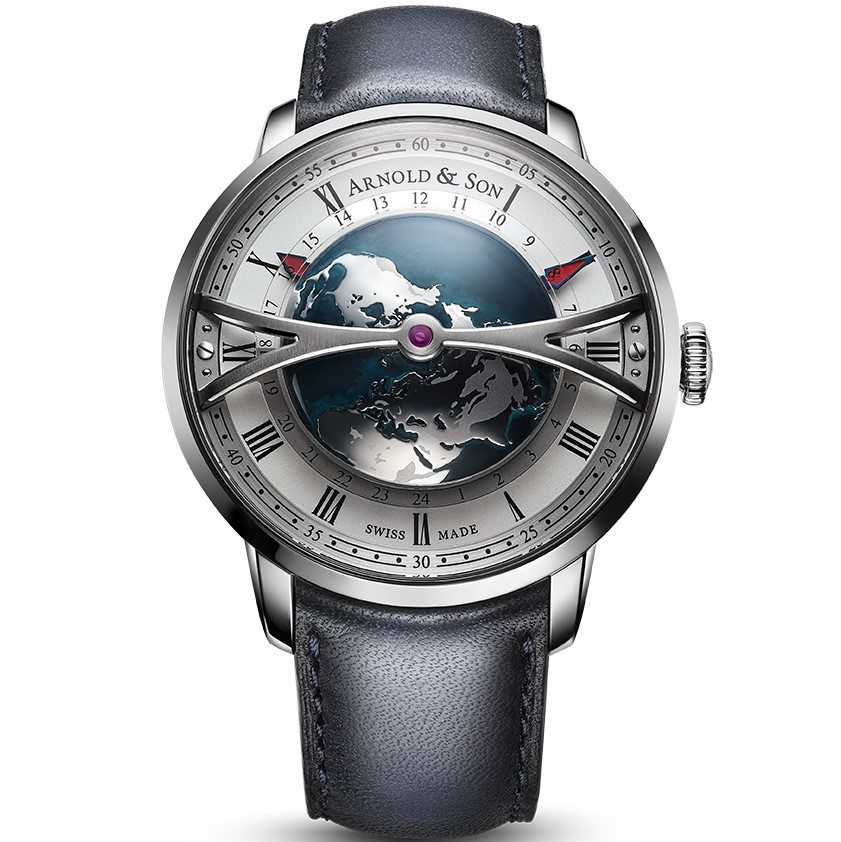
The large bridge which spans the dial of the Arnold & Son Globetrotter holds in place both the hemisphere and the sapphire crystal chapter ring with 24-hour indicators, with the central structure making one complete rotation every 24-hours. A traditional world-timer would also feature a fixed inner bezel with indicators for major cities in 24 time zones so that you can tell what time it is at each location at a glance by lining up the city with the rotating 24-hour time display beneath it. The Arnold & Son Globetrotter lacks this feature, so unless you can memorize where each city would be around the dial based on their time differences (London at about 12 o’clock, Sydney at about 5 o’clock, etc) you won’t be able to use the rotating “world-time” display in any meaningful way.
An argument could be made for the Arnold & Son Globetrotter as a GMT watch, but even this isn’t straightforward as there are no dedicated indicators on the dial to orient GMT time. It would be up to the wearer to arbitrarily decide on a fixed point from which to set (and read) GMT time, for example, you could decide that whatever is displayed at 12 o’clock is GMT time and then use the crown’s third position to set it accordingly. Although the position of the “Arnold & Son” branding at 12 o’clock makes this something of a poor choice, as really you’d be using the 60-minute indicator on the outer bezel as your fixed point in this scenario. It’s also unclear from the brand’s press release material as to whether the bridge spanning the dial rotates along with the hemisphere and 24-hour ring; if it doesn’t it could possibly serve as a GMT indicator (using the cut-outs at either end), but even in that circumstance there’s still a confusing element – do I read GMT time at 3 o’clock, or at 9 o’clock?
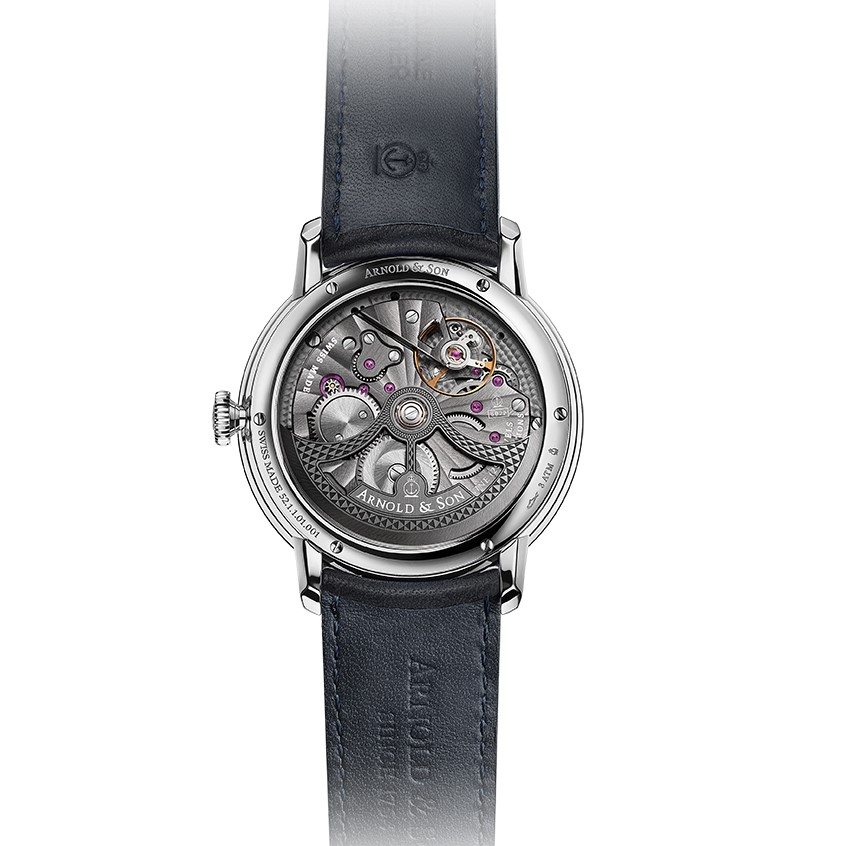
For all my gripes about legibility and usability, I can’t deny that the Arnold & Son Globetrotter is still an attractive watch. The central hemisphere is wonderfully detailed and textured, an effect the brand accomplishes by chemical etching and then polishing a rounded piece of brass, followed by sandblasting the mountainous areas, multiple layers of blue lacquer (in different hues) to achieve the illusion of oceanic depth and a final layer of clear lacquer overall. The result is a much more detailed hemisphere than is typically featured on world-timers of this style, and at 45mm wide by 17.2mm tall, the Arnold & Son Globetrotter is sure to attract attention.
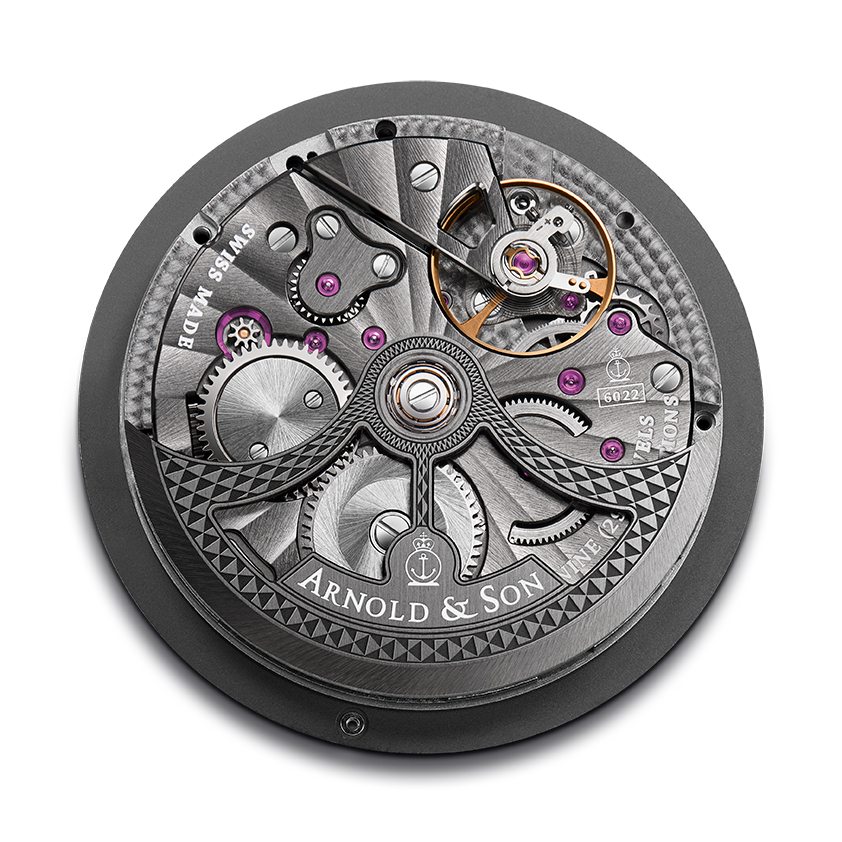
The 24-hour sapphire disc features a metallic treatment between 18:00 to 06:00, creating an opaque look which serves as a day-night indicator for GMT time. Local-time hours are displayed using large roman numerals against a silvery-white dial with an opaline finish, surrounded by a circular brushed steel minute track around the dial’s periphery. The local-time hour and minute hands are made of blued steel which is then lacquered red to better stand out against the blue of the central hemisphere. The crown’s second position can be used to set the local time’s hour hand forward or backward in one-hour increments, which does help when traveling between time zones.
The Arnold & Son Globetrotter comes attached to a hand-aged blue calf leather strap, a nice aesthetic touch which compliments the blue of the watch’s most dominant visual element, the world hemisphere. The large case is made of stainless steel and features a heavily domed sapphire crystal with a central facet, which adds some visual interest but also detracts from legibility when attempting to read the dial side-on. The case is water-resistant to 30m, which seems somewhat poor from a brand whose marketing always claims to be inspired by the marine chronometers of olden days.
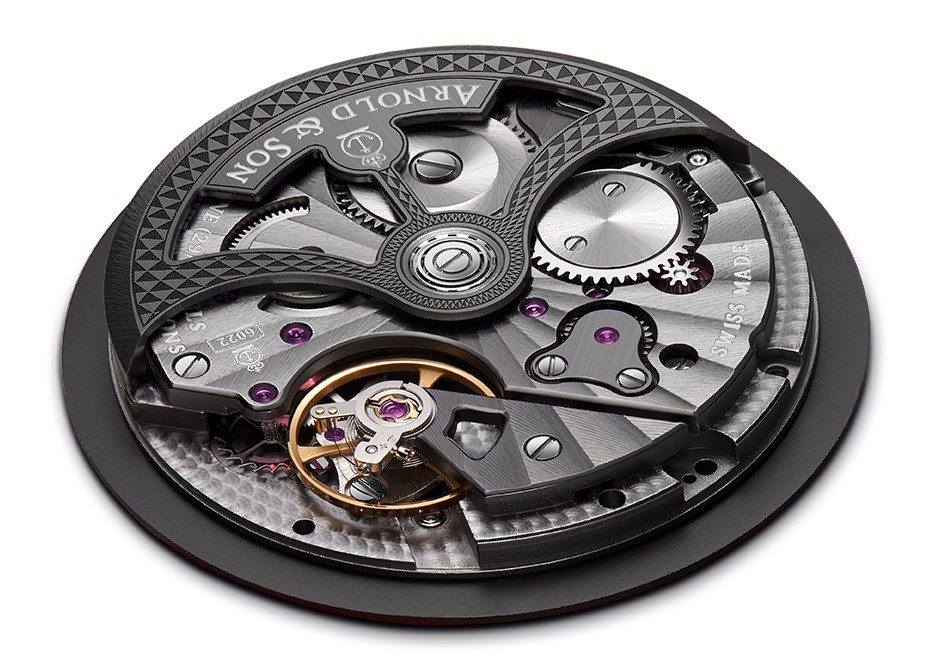
Powering the watch is the manufacture calibre A&S6022, an automatic movement which oscillates at 28,800 vph (or 4Hz) and offers a modest power reserve of 45 hours. This is a well-finished movement, with hand-chamfered bridges, Côtes de Genève rayonnantes (aka “radiating” Geneva stripes) decoration, satin-finished wheels and screw heads that have been beveled and mirror-polished. The oscillating weight has further been ADLC-treated and engraved with a hobnail motif, making the reverse side of this watch as interesting and attractive as the dial-side.

Although the Arnold & Son Globetrotter is as attractive a watch as we’ve come to expect from the brand, I can’t get past their seemingly unusable implementation of a world-timer complication. Maybe there’s something I’m missing, and when I get to see this watch in the metal there will be a eureka-moment when the dial configuration suddenly makes sense. On top of that, there’s also the matter of price. Beautiful dial and well-finished movement aside, this is still a steel watch with an asking price of 14,900 CHF (VAT excl.), which seems excessive for what’s on offer. For a similar amount of money, one could buy something like the Jaeger-LeCoultre Geophysic Universal Time (hands-on here), which lacks the sculptural 3-dimensionality of the Globetrotter but exceeds it in almost every other respect. What buyers will really need to decide is whether a lacquered bit of brasswork on their wrists is worth 15-large, and for the majority, I expect the answer will be “no.” arnoldandson.com

